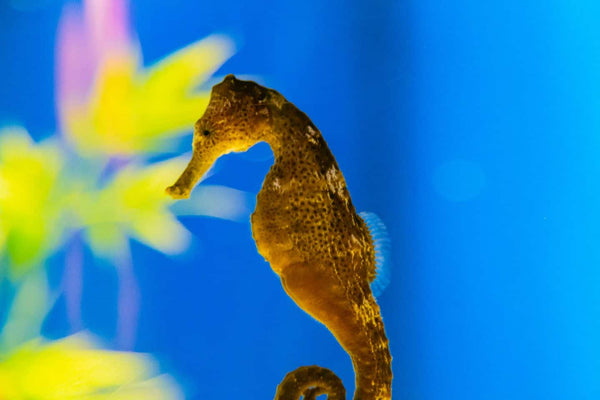Seahorses in Hawaii! And Lots of Other Mind-Blowing Facts About One of the Ocean’s Strangest Creatures
The Hawaiian Smooth Seahorse: A Unique Ocean Resident
The other day, I was out surfing, and suddenly someone in the lineup yelled, “There’s a seahorse!” As it turned out, the seahorse was dead—which was a bummer. But what was even more surprising to me was that there was a seahorse in the water at all. I didn’t know that we had seahorses in Hawaii! Another thing that surprised me was how big it was. Most seahorses I see in pictures are super tiny—around an inch or two at the most. But this one was at least twice that size—nearly four or five inches long!

Photo Courtesy: mauioceancenter.com
A Unique Species with Fascinating Traits
This entire experience got me scratching my head and wanting to learn more about seahorses, and especially those that visit the Hawaiian water. I reached out to Hawaiian South Shore’s resident big wave surfer and ocean expert, Matt Rott, and this is what he had to say.
A lot of people don’t realize that Hawaii actually has a couple of different seahorse species, including one that is native to the islands and actually called the Hawaiian smooth seahorse. This seahorse differs from the species that you see in popular culture and the media, as it has a smooth skin and lacks the bumpy “spikes” that are characteristic of most seahorses. Interestingly, it is also quite large, growing to as long as a foot in length!
Seahorses in general are quite an interesting species for a number of reasons, not the least of which is the fact that they are one of two species (the other being the sea dragon) where the male gets pregnant, carries the embryo, and gives birth to babies. The females still produce the eggs (which is part of what makes them female), but they implant eggs in a sack on the males’ tails (called a brood pouch) that serve as a sort of uterus. The sack contains a placenta that supports the development of the embryos once the eggs are fertilized. After two to four weeks, the abdominal area begins to contract, and up to 1,000 live seahorse babies are ejected into the water.
Unfortunately, seahorse broods have to be this large due to the fact that only 0.5 percent of seahorse babies survive to adulthood. The babies must fend for themselves from the time of birth, and most end up failing to find enough food, or becoming food themselves!
Fortunately for me, some of the Hawaiian smooth seashorses do indeed make it to adulthood, and I was lucky enough to see one in the wild (even though it was dead). Hopefully the next one I see will be alive and thriving—and hopefully you’ll get to see one too. Keep an eye out for them next time you are in the water!

